Hanwha Resort Sanjeonghosu Annecy Hot Spring (한화리조트 산정호수 안시 온천사우나)
8.9Km 56501 2024-02-08
402 Sanjeonghosu-ro, Yeongbuk-myeon, Pocheon-si, Gyeonggi-do
Hanwha Resort Sanjeonghosu Annecy Hot Springs is a spa that utilizes natural hot spring water drawn from 700 meters below ground. Its hot spring water, composed of alkaline sodium bicarbonate, is gentle on the skin and known for its benefits in fatigue recovery and skin beautification. The sauna facility is divided into indoor and outdoor sections. Indoors, various types of saunas and hot baths are available. Outdoors, there is an open-air bath and an outdoor jacuzzi, providing the opportunity to enjoy the hot spring in a natural setting.
Pyunggang Botanical Garden (평강식물원)
10.6Km 11612 2016-12-08
203, Umulmok-gil, Yeongbuk-myeon, Pocheon-si, Gyeonggi-do
+82-31-532-1779
Located at the entrance of Sanjeonghosu Lake, Pyunggang Botanical Garden opened in May 2006, and was designated as a habitat for preservation by the Ministry of Environment in 2009. The garden has on exhibit both native plants and species of plants from around the globe. Additionally, the garden features an exquisite collection of over 1,000 different alpine plants that normally reside on an altitude of 2,500 meters.
The scope of the garden is comprehensive, but it is divided into 12 themed areas, including a Rock Garden, where the largest alpine plants in Asia are concentrated; a Wetland Center, which mimics the natural ecology of a wetland region; a Pond Garden consisting of roughly 50 ponds lined with gorgeous flowers; a Moss Center where moss that grows in deep valleys and forests can be seen; and a Grass Square, which serves as a green common year round. The Pyunggang Botanical Garden, serves an important role in preserving rare plants, but is also creating a new botanical garden culture, and serving as a center for public ecological education.
Bidulginangpokpo Falls-Hantangang River Geopark (비둘기낭폭포-한탄강 국가지질공원)
11.0Km 303 2019-09-03
Daehoesan-ri, Pocheon-si, Gyeonggi-do
+82-31-538-2312
Bidulginangpokpo Falls, Natural Monument No. 537, is located within a small valley. The waterfall is surrounded by grand columnar joints. The landscape appears quite mysterious and serene, earning it a spot as a poplar filming site for historical dramas. The falls gets it's name ("Pigeon Falls" in Korean) from the story of many wild pigeons nesting in the caves around the waterfall. Other say the name comes from the area's shape. During heavy rainfall, the road to the waterfall is closed, so checking the weather before visiting is recommended.
Hantangang Garden Festa (포천 한탄강 가든페스타)
11.3Km 0 2024-09-04
832 Changdong-ro, Gwanin-myeon, Pocheon-si, Gyeonggi-do
+82-31-538-3030
The Hantangang Garden Festa focuses on the healing aspect of nature, featuring a silver grass maze, autumn flower garden, electric bicycle rides, pet playground, and more. The silver grass maze in particular is a great way to enjoy all autumn has to offer, as well as take beautiful pictures. Family visitors love the bicycle rides.
Pocheon Baegungyegok Valley Dongjangkun Festival (포천 백운계곡 동장군축제)
12.1Km 24879 2020-02-17
2381, Hwadong-ro, Pocheon-si, Gyeonggi-do
• 1330 Travel Hotline: +82-2-1330 (Korean, English, Japanese, Chinese) • For more info: +82-31-535-7242
The Pocheon Baegungyegok Valley Dongjanggun Festival is held in the area of Doridol Village, famous for I-dong galbi (ribs) and I-dong makgeolli (rice wine). During the festival, visitors can enjoy a vareity of tasty foods and fun hands-on winter experiences. Popular programs include ice fishing and sledding.
Cheorwon Dopiansa Temple (도피안사(철원))
13.2Km 12718 2022-11-14
23, Dopidong-gil, Cheorwon-gun, Gangwon-do
+82-33-455-2471
Dopiansa Temple was built by the Buddhist Monk Doseon in 865, the 5th year of the reign of King Gyeongmun of the Unified Silla Period. Legend has it that Monk Doseon founded this temple because a 91 centimeter-tall iron seated Vairocana Buddha statue had disappeared while being carried to Anyangsa Temple in Cheorwon and was mysteriously found seated at the current site.
The temple was named Dopiansa to indicate that the iron-made Buddha statue had reached “pian,” meaning an eternal place to rest. In addition to the legendary iron seated Variocana Buddha statue (National Treasure) made by Monk Doseon, the temple houses a 4.1 meter-tall three-story stone pagoda (Treasure).
Pocheon Idong Galbi Village (포천 이동갈비마을)
13.4Km 26025 2022-10-26
2078, Hwadong-ro, Pocheon-si, Gyeonggi-do
+82-2-1330
Idong Galbi is a famous term for Koreans, representing the delicious hanu (Korean beef) short ribs that have been made with high quality meat and marinade. Nowadays, people can see signboards advertising Idong Galbi throughout Korea; however, the dish originated from Idong-myeon in Pocheon-si, Gyeonggi-do. Idong Galbi Village began with two stores in the early 1960s. They became famous and many more restaurants began to serve this local specialty.
Bokjusan National Recreational Forest (국립 복주산자연휴양림)
14.6Km 24785 2021-06-07
818, Haojae-ro, Cheorwon-gun, Gangwon-do
+82-33-458-9426
Bokjusan National Recreational Forest was officially designated as a national recreational forest in 1998. It is a home to a wide variety of flora and fauna, as well as numerous recreational facilities including two hiking routes (2.5 ㎞ and 1.5 ㎞) to the Bokjusan Mountain summit, Forest Recreation Center equipped with 10 guest rooms, and a campground.
Just 15 minutes by car from the forest is Maewoldae, where Joseon dynasty scholar and author Kim Si-Seup lived in seclusion. Maewoldae is surrounded by a lush forest with a deep valley, and also offers a magnificent view of Seonampokpo Falls at the foot of the mountain standing across. At the entrance of Maewoldae is the Cheongseokgol Outdoor Studio, where popular Korean TV dramas such as "Im KkokJong (1996)" and "Damo (2003)" were filmed.
Key Observatory (열쇠전망대)
14.7Km 13020 2022-09-07
1375-1, Dongnae-ro, Yeoncheon-gun, Gyeonggi-do
+82-31-839-2147
Called to play the role of an important key for unification, Key Observatory was established on April 11, 1998 to commemorate the sorrow of homesickness and provide security education in the area. Military in the area can also keep watch over the north from this location. Visitors can see the DMZ fences and the Guard Point as well as exhibition hall where war items can be found.
Godaesan Mountain (고대산)
15.0Km 54539 2021-07-20
Sinseo-myeon, Yeoncheon-gun, Gyeonggi-do
+82-31-839-2061
Godaesan Mountain (alt. 832 meters) is located next to Sintan-ri Station, which is the railroad disconnection point of the Gyeongwon Line. It is also on the way to Geumgangsan Mountain. Godaesan is ideal for mountain hiking because of its natural beauty and well-preserved
ecosystem. Moreover, this is the only mountain in South Korea on which the North Korean territory can be seen.
There are several theories about the origin of the mountain's name. One is that the mountain had been referred to as "keungore" (big whale) in the past by local residents. Another is that the mountain looks like the
banggorae (smoke duct) of a traditional Korean heating system when seen from the Sintan area; this is because the mountain's deep valleys resemble the furrows under that house that facilitate the passage of hot air to heat the room above. On a topographic map, the mountain was also marked as "Gotae" (like the constellations high above).
Godaesan also has a dense forest, making it a suitable source of timber and charcoal. Because of its abundant forest resources, a jumak (a tavern or inn that served food and liquor and provided lodging to travelers) village was formed here. The place was well-known for
charcoal production prior to the Korean War.
On November 4, 1907, 150 soldiers from the Korean militia fought a fierce battle with the 8th Company of the Japanese Army's 20th Infantry Regiment in Yeoncheon. After the fight, the Korean militia were scattered throughout the jumak village. Later on, 60 of them engaged in a
fierce battle again with the Japanese soldiers on Godaesan. This is a place imbued with the brave spirit of the Korean people.
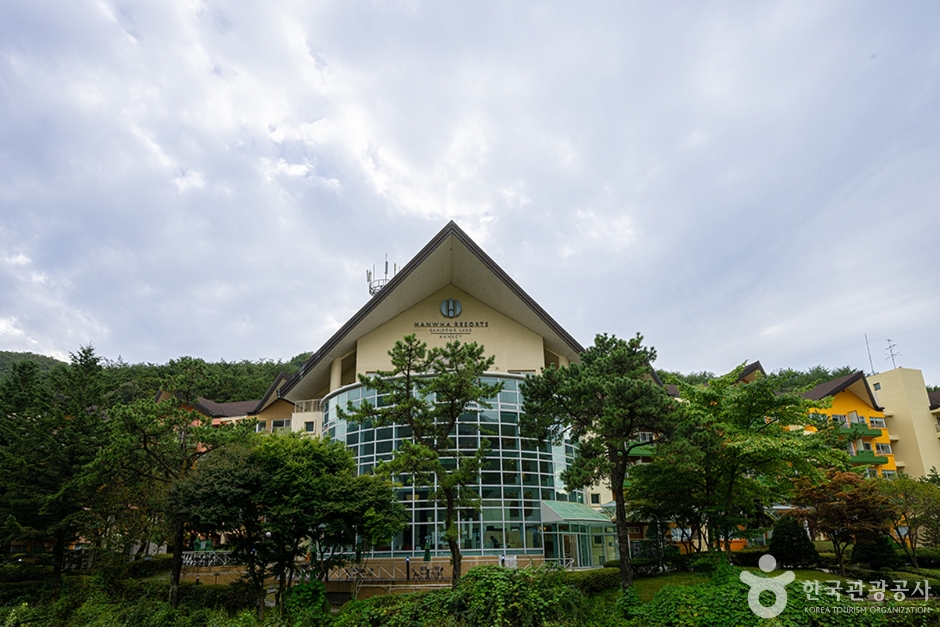
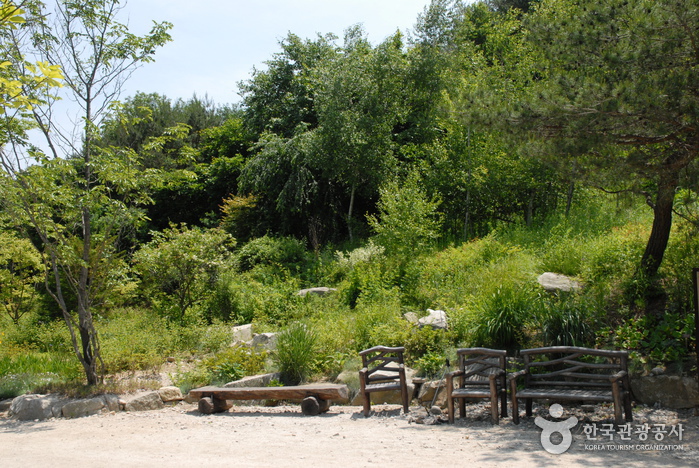
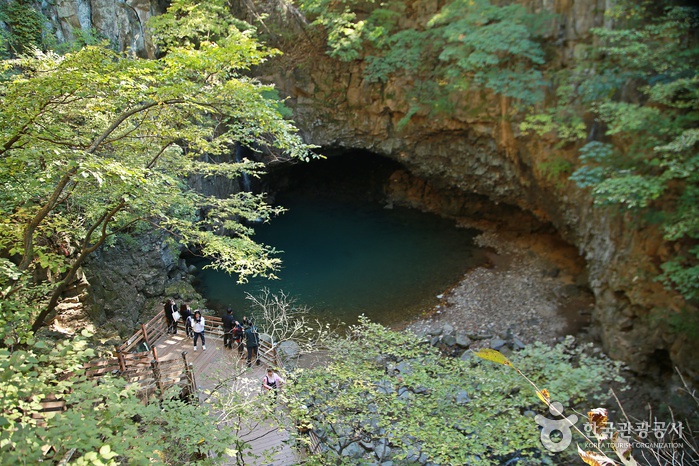
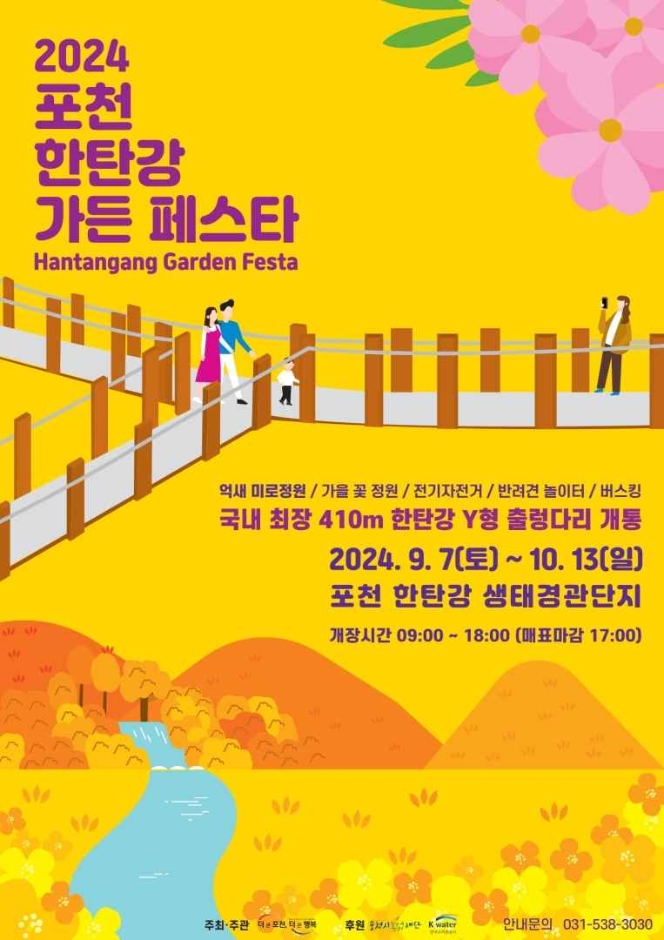
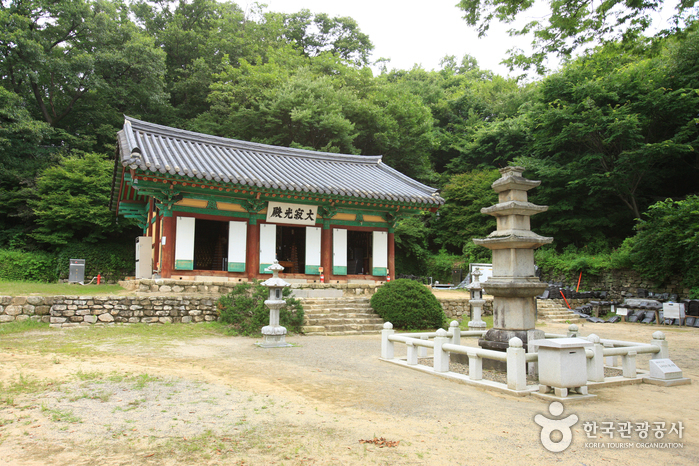
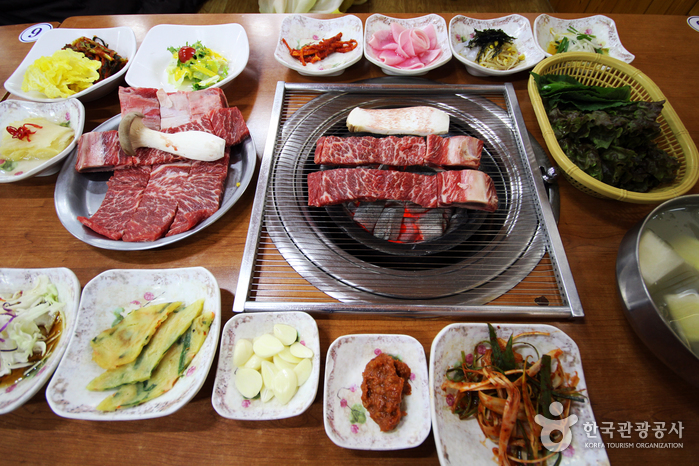
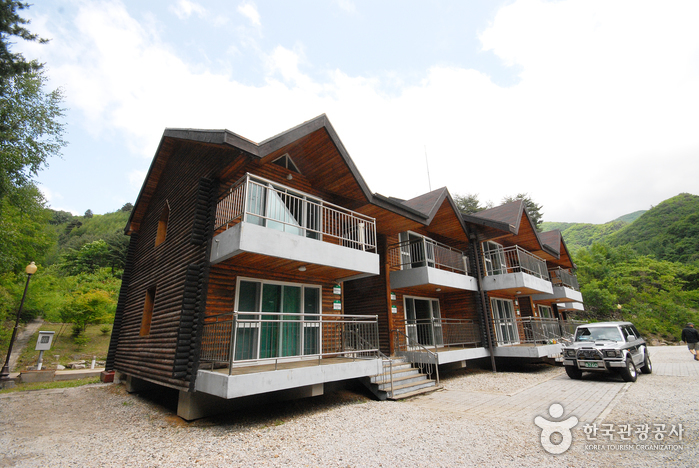
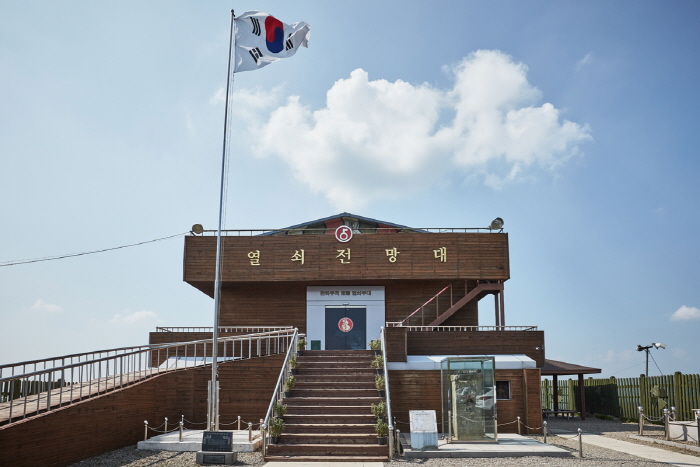
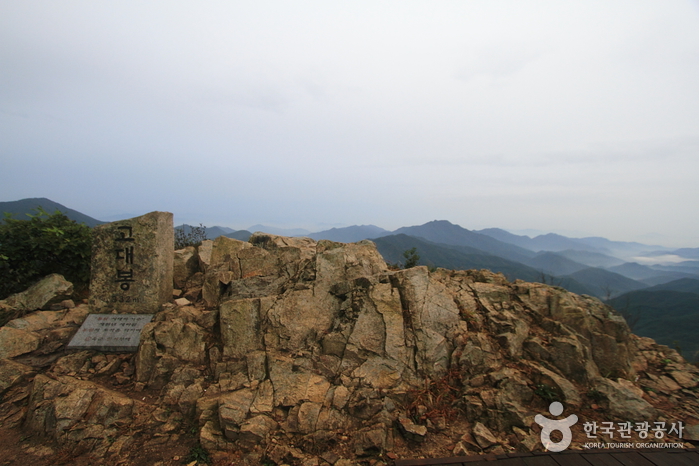
 English
English
 한국어
한국어 日本語
日本語 中文(简体)
中文(简体) Deutsch
Deutsch Français
Français Español
Español Русский
Русский